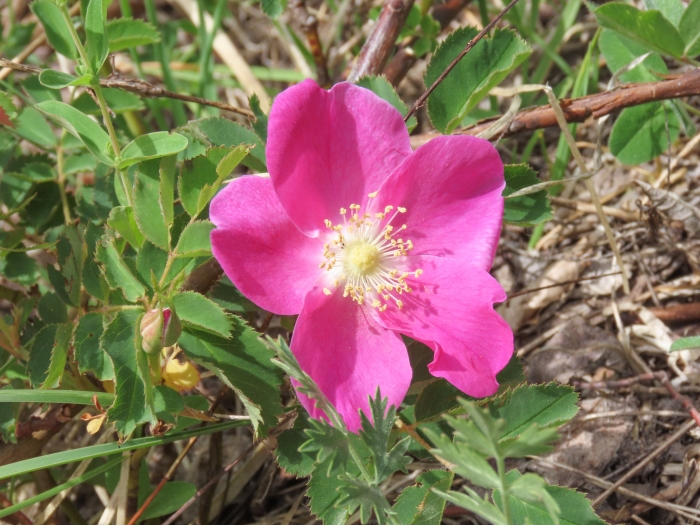Alpine Rose
(Rosa pendulina)
Alpine Rose (Rosa pendulina)
/
/

Emanuele Santarelli
CC BY-SA 4.0
Image By:
Emanuele Santarelli
Recorded By:
Copyright:
CC BY-SA 4.0
Copyright Notice:
Photo by: Emanuele Santarelli | License Type: CC BY-SA 4.0 | License URL: http://creativecommons.org/licenses/by-sa/4.0/ | Rights Holder: Emanuele Santarelli | Publisher: iNaturalist | Date Created: 2022-05-31T12:41:46-07:00 |

























Estimated Native Range
Summary
Rosa pendulina, commonly known as Alpine Rose or Mountain Rose, is a deciduous climbing shrub native to the mountainous regions of central and southern Europe, including the Alps, the Pyrenees, and the Carpathians. It thrives in subalpine and alpine zones, often found in rocky areas, forest clearings, and alongside streams where the environment is moist but well-drained. Rosa pendulina typically grows 2 to 7 feet tall and is characterized by its arching stems, deep pink to fuchsia flowers that bloom in early summer, and relatively few thorns. The flowers are moderately showy and can add a splash of color to the landscape.
The Alpine Rose is valued for its hardiness and picturesque blooms, making it a suitable choice for rock gardens, alpine collections, and naturalistic plantings. It can also be trained on trellises or used as informal hedging. This species prefers cooler climates and partial shade, though it can tolerate full sun in cooler regions. It requires moist, well-drained soils and can be propagated by cuttings or seeds. While it is relatively low-maintenance, it may be susceptible to common rose diseases such as black spot and powdery mildew. Gardeners should also be aware that it can spread if not managed, potentially becoming invasive in some conditions.CC BY-SA 4.0
The Alpine Rose is valued for its hardiness and picturesque blooms, making it a suitable choice for rock gardens, alpine collections, and naturalistic plantings. It can also be trained on trellises or used as informal hedging. This species prefers cooler climates and partial shade, though it can tolerate full sun in cooler regions. It requires moist, well-drained soils and can be propagated by cuttings or seeds. While it is relatively low-maintenance, it may be susceptible to common rose diseases such as black spot and powdery mildew. Gardeners should also be aware that it can spread if not managed, potentially becoming invasive in some conditions.CC BY-SA 4.0
Plant Description
- Plant Type: Shrub
- Height: 3-10 feet
- Width: 3-8 feet
- Growth Rate: Moderate
- Flower Color: Pink
- Flowering Season: Spring, Summer
- Leaf Retention: Deciduous
Growth Requirements
- Sun: Full Sun
- Water: Medium
- Drainage: Medium
Common Uses
Bee Garden, Bird Garden, Border Plant, Fragrant, Low Maintenance, Showy Flowers
Natural Habitat
native to the mountainous regions of central and southern Europe, including the Alps, the Pyrenees, and the Carpathians
Other Names
Common Names: Alpine Rose, Drooping Rose, Mountain Rose, Rock Rose
Scientific Names: , Rosa pendulina, Bakeria malyi, Chavinia croatica, Ozanonia alpina, Rosa aculeata, Rosa adenophora, Rosa adenophora var. eriocephala, Rosa adenosepala, Rosa adenosepala f. levilagensis
GBIF Accepted Name: